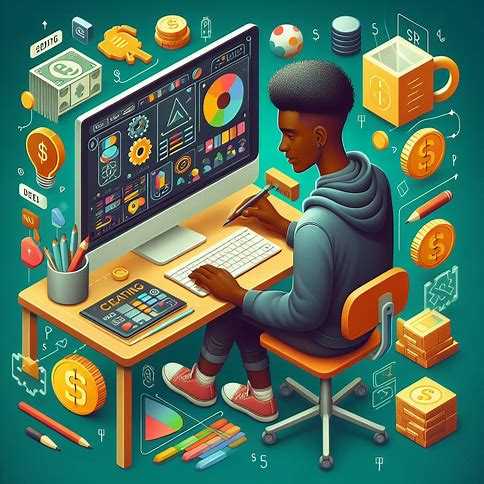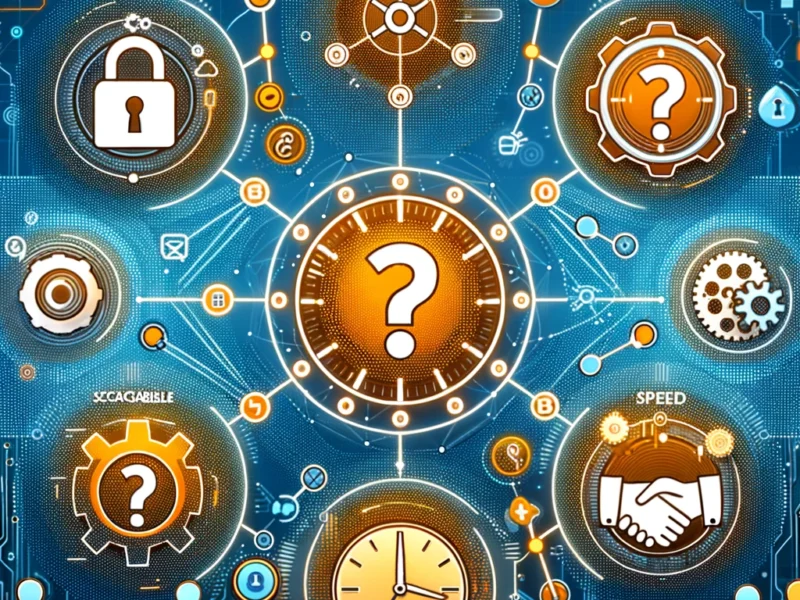Imagine a world where your hard-earned educational achievements are securely stored, easily verifiable, and forever preserved. No more worrying about lost transcripts, forged diplomas, or the hassle of requesting records from institutions. This is the promise of blockchain technology in education.
Blockchain, the technology behind cryptocurrencies like Bitcoin, is now being applied to create a more efficient, transparent, and secure system for managing educational credentials. In this article, we will explore how blockchain can transform education with tamper-proof credentials. We will cover the key benefits of blockchain-based credentials, real-world examples of this technology in action, and the potential impact on students, educators, and employers.
Jump To
ToggleThe Need for Tamper-Proof Credentials
Educational credentials play a crucial role in determining a candidate’s qualifications and potential. However, the current system for issuing and verifying these credentials is often slow, inefficient, and vulnerable to fraud.
Forged diplomas and fake degrees are a growing problem, with some estimates suggesting that up to 200,000 fake degrees are sold each year in the United States alone. This not only undermines the value of legitimate degrees but also puts employers at risk of hiring unqualified candidates.
Moreover, the process of verifying credentials can be time-consuming and costly for both job seekers and employers. Requesting transcripts and diplomas from educational institutions can take weeks or even months, delaying the hiring process and putting a strain on resources.
This is where blockchain comes in. By creating a secure, decentralized system for storing and verifying educational records, blockchain has the potential to revolutionize the way we manage credentials.
How Blockchain Works in Education
At its core, a blockchain is a distributed ledger technology that allows multiple parties to securely record and verify transactions without the need for a central authority. In the context of education, a blockchain-based system would allow schools and universities to issue digital certificates that are stored on the blockchain.
These digital certificates would contain all the relevant information about a student’s academic achievements, including courses taken, grades earned, and degrees awarded. The information would be cryptographically secured and tamper-proof, meaning that it cannot be altered or deleted once it has been recorded on the blockchain.
When a student applies for a job or further education, they can simply share their digital certificate with the employer or institution. The recipient can then easily verify the authenticity of the certificate by checking it against the blockchain.
This process eliminates the need for time-consuming manual verification and reduces the risk of fraud. It also empowers students to own and control their academic records, rather than relying on institutions to manage and share their data.
Real-World Examples of Blockchain in Education
Several initiatives are already underway to bring blockchain technology to the education sector. One notable example is the Massachusetts Institute of Technology (MIT), which has been issuing digital diplomas to students via blockchain since 2017.
Using an app called Blockcerts, MIT graduates can securely share their digital diplomas with employers, schools, and other third parties. The app allows recipients to verify the authenticity of the diploma by checking it against the blockchain, without the need to contact MIT directly.
Another example is the University of Nicosia in Cyprus, which became the first university in the world to offer a blockchain-based degree program in 2014. The university’s MSc in Digital Currency program is fully accredited and taught online, with all certificates and transcripts stored on the Bitcoin blockchain.
Other universities and educational institutions around the world are also exploring the potential of blockchain technology. From the University of Melbourne in Australia to the University of Dubai in the United Arab Emirates, schools are recognizing the benefits of secure, tamper-proof credentials.
The Benefits of Blockchain-Based Credentials
Here are a few of the most significant benefits of using blockchain technology for educational credentials:
1. Enhanced Security:
Blockchain-based credentials are virtually impossible to forge or tamper with, thanks to the cryptographic security of the blockchain. This reduces the risk of fraud and ensures that academic records are accurate and trustworthy.
Increased Efficiency: By eliminating the need for manual verification and paper-based records, blockchain can streamline the process of issuing and verifying credentials. This saves time and resources for both students and institutions.
2. Improved Accessibility:
With blockchain-based credentials, students have complete control over their own academic records. They can easily share their certificates with anyone, anywhere in the world, without relying on institutions to manage their data.
3. Greater Transparency:
Blockchain technology creates a transparent and auditable record of all transactions, including the issuance and verification of credentials. This increases accountability and trust in the education system.
4. Cost Savings:
By reducing the need for manual processes and paper-based records, blockchain can help educational institutions save money on administrative costs. This could ultimately lead to lower tuition fees and more accessible education for students.
The Potential Impact on Students, Educators, and Employers
The widespread adoption of blockchain technology in education could have a profound impact on students, educators, and employers alike.
For students, blockchain-based credentials offer a secure and convenient way to manage their academic records. They no longer have to worry about losing important documents or relying on institutions to send transcripts on their behalf. Instead, they can own and control their own data, sharing it with potential employers or schools as needed.
This could also have implications for lifelong learning and professional development. With blockchain-based credentials, students can easily build a comprehensive record of their skills and achievements over time, from formal degrees to online courses and work experience.
For educators, blockchain technology can help streamline administrative processes and reduce the burden of manual record-keeping. By automating the issuance and verification of credentials, schools can focus more on teaching and learning, rather than paperwork.
Blockchain can also enable new models of education, such as decentralized learning networks and micro-credentialing. This could make education more flexible, personalized, and accessible to a wider range of learners.
For employers, blockchain-based credentials offer a more efficient and reliable way to verify a candidate’s qualifications. Rather than relying on paper certificates or contacting schools directly, employers can quickly and easily check a candidate’s digital credentials against the blockchain.
This could help reduce the risk of hiring unqualified or fraudulent candidates, while also saving time and resources in the recruitment process. In addition, blockchain could enable new forms of talent management, such as skill-based hiring and personalized career development plans.
Challenges and Considerations
While the potential benefits of blockchain in education are significant, there are also some challenges and considerations to keep in mind.
One challenge is the need for widespread adoption and standardization. For blockchain-based credentials to be truly effective, they need to be recognized and accepted by a critical mass of institutions and employers. This will require collaboration and coordination among different stakeholders in the education sector.
Another consideration is the issue of privacy and data security. While blockchain technology is highly secure, it is not foolproof. There are still risks associated with storing sensitive personal information on a public ledger, and institutions will need to carefully consider how to balance transparency with privacy.
Finally, there are also technical challenges to overcome, such as scalability and interoperability. As more institutions adopt blockchain-based credentials, there will be a need for common standards and protocols to ensure that different systems can communicate and exchange data seamlessly.
The Future of Blockchain in Education
Despite these challenges, the future of blockchain in education looks bright. As more institutions recognize the benefits of tamper-proof, secure, and verifiable credentials, we can expect to see wider adoption of this technology in the years to come.
Some experts predict that blockchain could ultimately transform the way we think about education and skills development. By enabling new models of learning and credentialing, blockchain has the potential to create a more flexible, personalized, and lifelong education system.
As Kerri Lemoie, founder of the Open Badges project, puts it: “Blockchain provides an opportunity to reimagine how we recognize learning and achievement in a way that is more equitable, transparent, and learner-centered.”
Key Takeaways
- Blockchain technology offers a secure, tamper-proof way to store and verify educational credentials.
- By using blockchain, educational institutions can streamline the process of issuing and verifying academic records, reducing fraud and saving time and resources.
- Students benefit from having complete control over their own academic records, which they can easily share with employers or other institutions.
- Blockchain-based credentials can facilitate lifelong learning and professional development by creating a comprehensive record of an individual’s skills and achievements.
- Educators can focus more on teaching and learning by automating administrative processes with blockchain technology.
- Employers can efficiently and reliably verify a candidate’s qualifications using blockchain-based credentials, reducing the risk of hiring unqualified or fraudulent candidates.
- Widespread adoption and standardization, privacy and data security, and technical challenges such as scalability and interoperability are among the considerations when implementing blockchain in education.
- The future of blockchain in education looks promising, with the potential to create a more flexible, personalized, and lifelong education system.
FAQs
1. What is blockchain technology, and how does it work in education?
A: Blockchain is a decentralized, tamper-proof ledger technology that allows multiple parties to securely record and verify transactions. In education, blockchain can be used to issue and store digital certificates containing information about a student’s academic achievements.
2. How does blockchain ensure the security and authenticity of educational credentials?
A: Blockchain-based credentials are cryptographically secured and tamper-proof, meaning the information cannot be altered or deleted once recorded on the blockchain. This ensures the authenticity of the credentials and reduces the risk of fraud.
3. What are some real-world examples of blockchain being used in education?
A: The Massachusetts Institute of Technology (MIT) has been issuing digital diplomas to students via blockchain since 2017. The University of Nicosia in Cyprus offers a blockchain-based degree program, with all certificates and transcripts stored on the Bitcoin blockchain.
4. How can blockchain benefit students, educators, and employers?
A: Students gain complete control over their academic records, easily sharing them with anyone worldwide. Educators can streamline administrative processes and focus on teaching. Employers can efficiently and reliably verify a candidate’s qualifications, reducing the risk of hiring unqualified candidates.
5. What challenges need to be addressed for widespread adoption of blockchain in education?
A: Challenges include the need for widespread adoption and standardization, ensuring privacy and data security, and overcoming technical hurdles such as scalability and interoperability.
6. How can blockchain enable new models of education?
A: Blockchain can facilitate decentralized learning networks, micro-credentialing, and skill-based hiring, making education more flexible, personalized, and accessible to a wider range of learners.
7. What is the future outlook for blockchain in education?
A: As more institutions recognize the benefits of tamper-proof, secure, and verifiable credentials, wider adoption of blockchain technology in education is expected in the coming years, potentially leading to a more transparent, accessible, and learner-centered education system.










